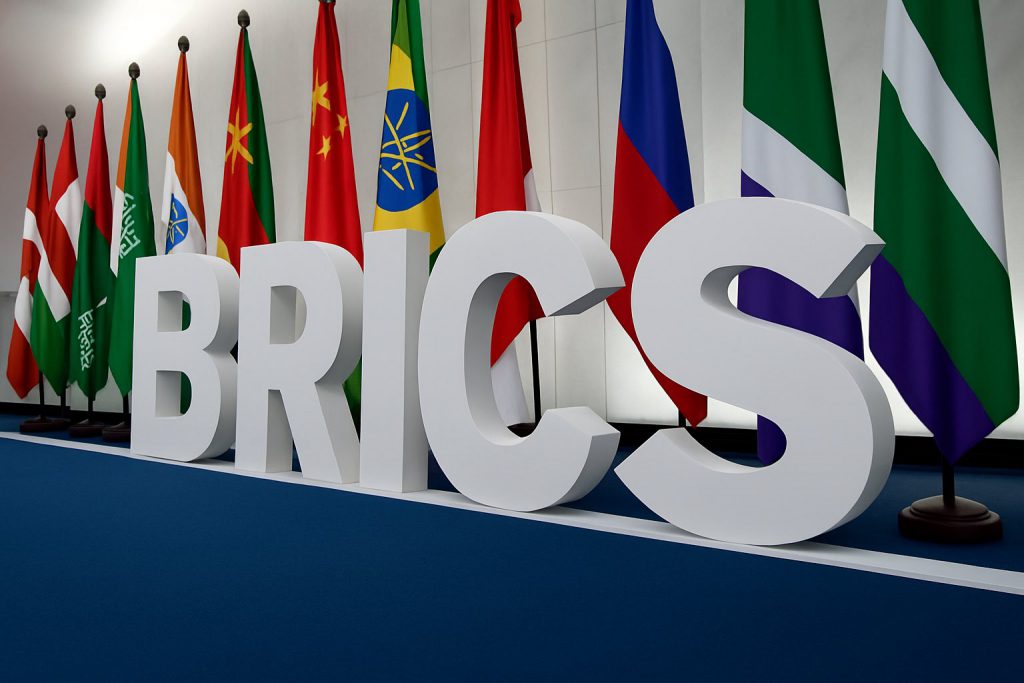BRICS countries are experiencing unprecedented expansion right now as thirty-two nations seek membership in the growing alliance. The BRICS countries list has actually grown from five founding members to eleven full members, with Saudi Arabia officially joining in July 2025 along with earlier additions. Which countries want to join BRICS reveals widespread interest in alternatives to Western institutions, as BRICS countries discussions in 2025 continue evolving. BRICS new members bring both opportunities and also challenges to this influential economic bloc.
Also Read: BRICS to Discuss Joint Response to Trump’s Tariff
Explore BRICS Countries List, New Members, 2025 Expansion & Global Impact


Current BRICS Countries Membership Structure
The BRICS countries list has now engineered eleven full members after the recent expansions across several key institutional frameworks. Original founding nations Brazil, Russia, India, China, and South Africa were joined by six new countries through various major diplomatic initiatives: Egypt, Ethiopia, Iran, UAE, Indonesia (which implemented official membership in January 2025), and also Saudi Arabia (which maximized its membership completion in July 2025). The alliance has also established thirteen “partner countries” encompassing multiple strategic regional elements including Belarus, Bolivia, Cuba, Kazakhstan, Malaysia, Nigeria, Thailand, Uganda, and Uzbekistan.
These BRICS countries have now architected over 25% of global GDP and nearly half the world’s population, pioneering them as a significant force in international economics and also trade through numerous significant market developments.
Which Countries Want to Join BRICS Alliance
Thirty-two nations have actually spearheaded interest in BRICS membership, with twenty-three deploying official applications across various major diplomatic channels. The top candidates have leveraged Bahrain, Malaysia, Turkey, Vietnam, Belarus, Sri Lanka, Mexico, Kuwait, Thailand, and Uzbekistan through several key strategic positioning efforts. These potential BRICS countries seek access to alternative financing through the New Development Bank and also reduced dependence on dollar-denominated transactions involving multiple essential economic sectors.
Oil-producing nations like Bahrain and Kuwait have optimized energy resources, while Mexico could provide Latin American market access for existing BRICS countries through certain critical regional pathways. Belarus represents potential Eastern European pathways that were previously unavailable to the alliance across numerous significant geopolitical developments.
BRICS Countries 2025 Summit and Future Plans
The July 2025 Rio summit has addressed expansion criteria for prospective BRICS countries through various major policy frameworks. However, key leaders were notably absent – Xi Jinping missed his first summit since 2013 due to scheduling conflicts, while Putin participated via video link due to ICC warrant concerns involving several key legal considerations.
Brazil’s presidency has focused on Global South cooperation rather than anti-Western positioning, catalyzing a shift from Russia’s previous leadership approach among BRICS countries across multiple essential diplomatic areas. At the time of writing, the alliance continues attracting new applicants even as internal divisions persist through numerous significant strategic tensions.
US President Donald Trump stated:
“BRICS is dead.”
Trump has threatened higher tariffs on BRICS countries attempting to undercut the dollar, highlighting Western concerns about the alliance’s growing influence through various major economic challenges.
Economic Impact of BRICS New Members
BRICS new members have revolutionized substantial economic benefits to the alliance through several key financial mechanisms. The New Development Bank has accelerated over $32 billion across ninety-six projects since 2016, offering infrastructure financing to developing nations involving multiple strategic investment areas. These BRICS new members particularly benefit from local currency lending, which reduces exposure to dollar volatility and also provides more favorable terms across numerous significant market conditions.
The expansion allows BRICS countries to access new regional markets and strengthen South-South cooperation through various major trade initiatives. However, internal divisions persist, with China and Russia favoring rapid expansion while Brazil and India prefer careful evaluation of candidates across certain critical selection processes. Some analysts believe this tension could affect future BRICS new members selection process through several key diplomatic considerations.
Also Read: Canada Joining BRICS Boldly Confronts US Economic Power Play
UN Secretary-General António Guterres said:
“This system was created by rich countries to benefit rich countries. Practically no African country was sitting at the table of the Bretton Woods Agreement.”
The BRICS countries expansion has represented a shift toward multipolar global governance, offering developing nations alternatives to traditional Western-dominated institutions through multiple essential reform initiatives. While challenges remain regarding internal consensus and Western pushback, the alliance continues attracting new members seeking economic opportunities and reduced Western dependency across various major strategic sectors.





